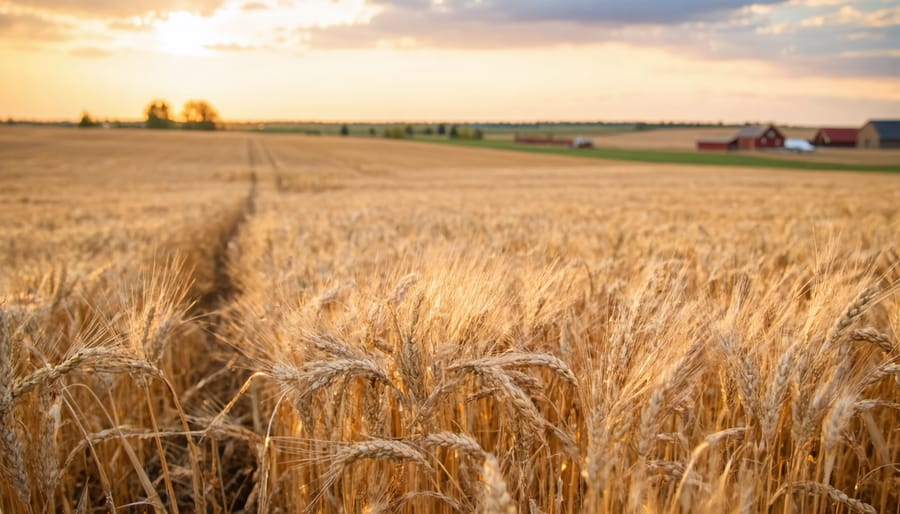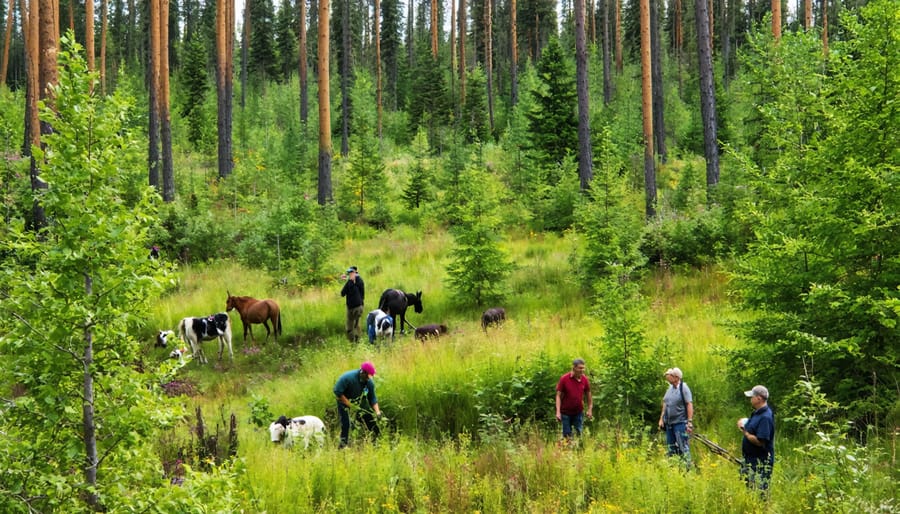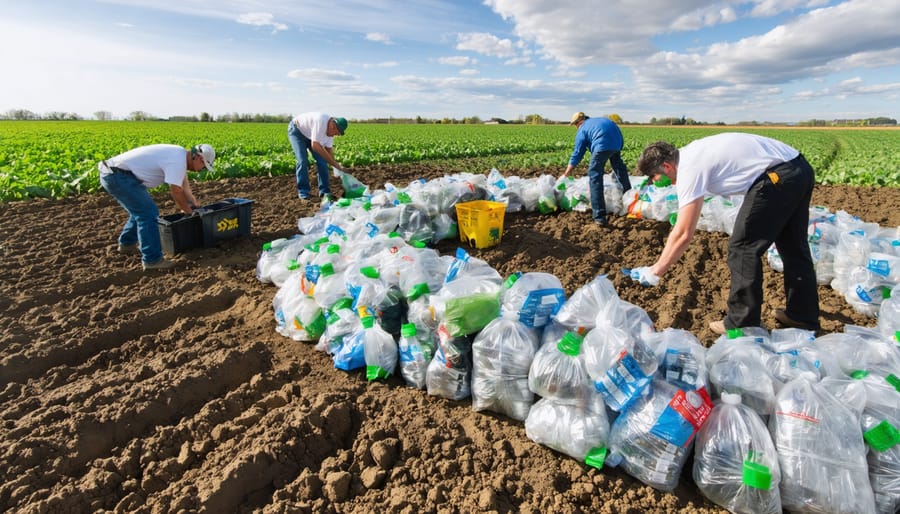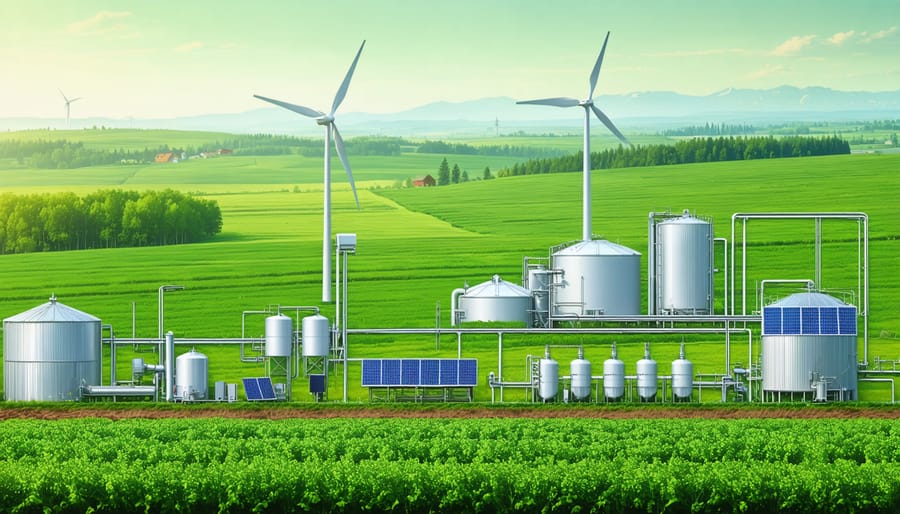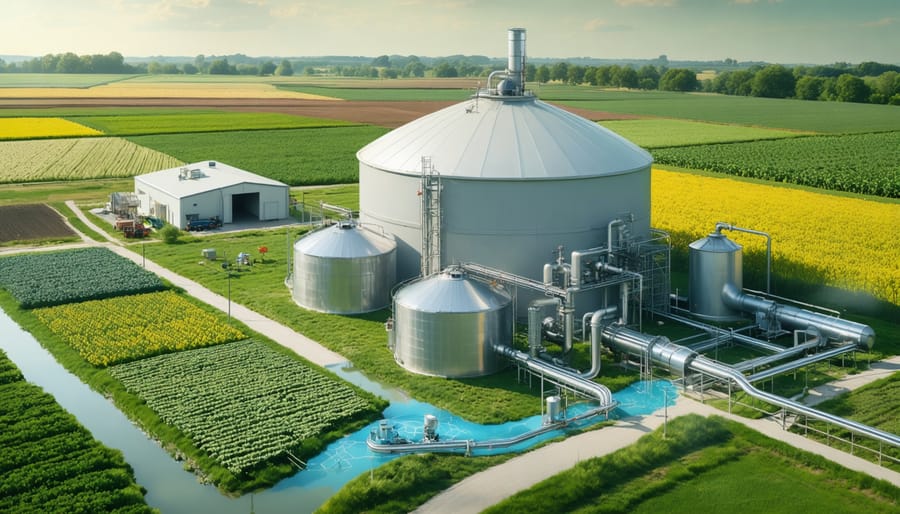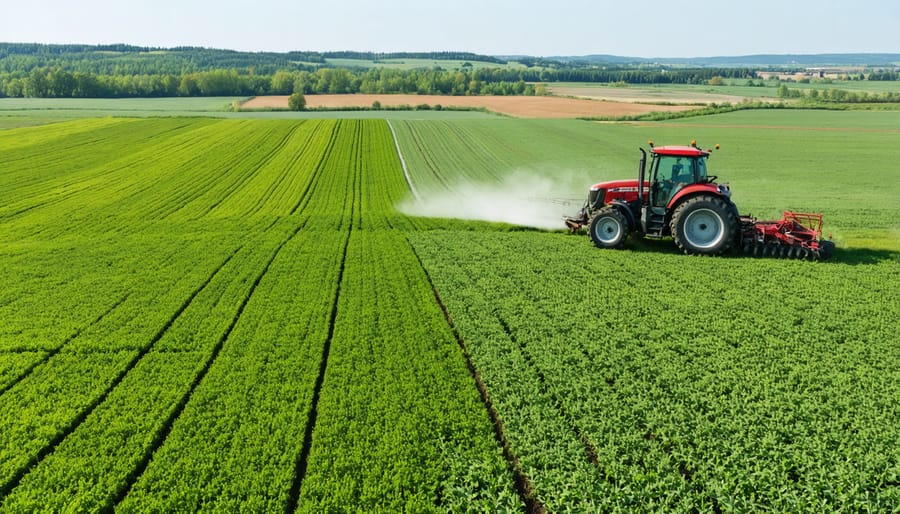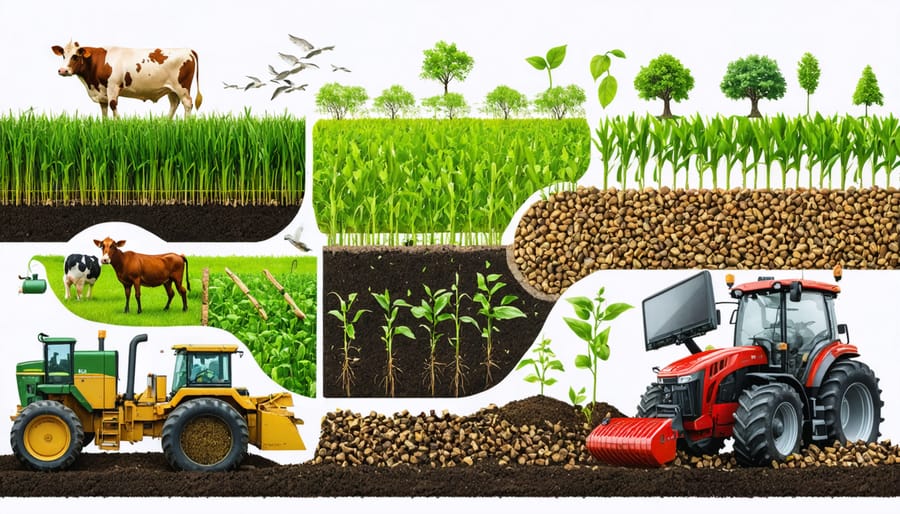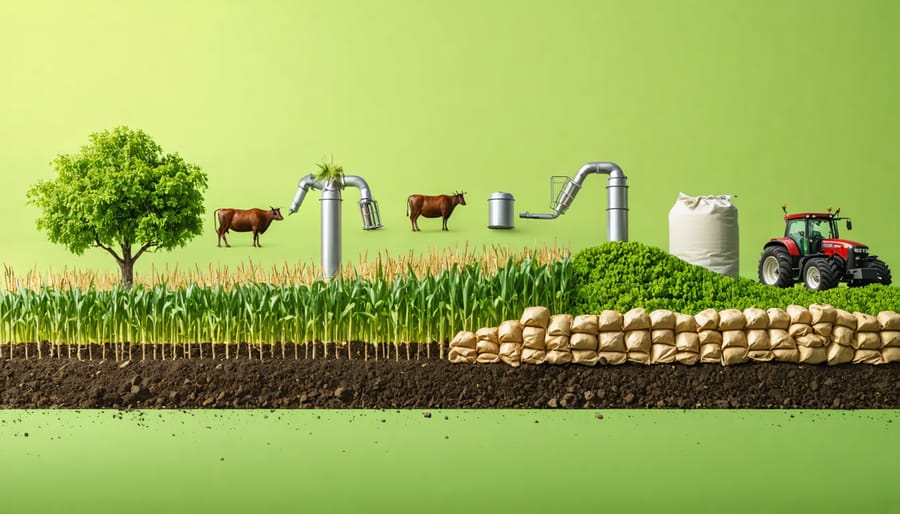In the heart of Alberta’s agricultural landscape, the Journal of Water and Soil Conservation stands as a vital resource bridging scientific research with practical farming solutions. This peer-reviewed publication has transformed how Canadian farmers approach land stewardship, delivering evidence-based strategies that protect our most precious natural resources while maintaining profitable agricultural operations.
For over three decades, this journal has documented the evolution of conservation practices across diverse Canadian terrains, from the Prairie provinces’ vast wheat fields to British Columbia’s specialized crop operations. Its unique focus on Canadian climate conditions and soil types makes it an indispensable tool for farmers seeking locally relevant solutions to conservation challenges.
What sets this publication apart is its commitment to featuring real-world applications alongside rigorous research. Each issue combines academic insights with practical case studies from working farms, demonstrating how theoretical knowledge translates into successful field implementations. Local farmers regularly contribute their experiences, creating a valuable knowledge-sharing network that strengthens our agricultural community.
The journal’s impact extends beyond individual farms, influencing provincial policy and shaping sustainable agriculture practices across the nation. By providing metrics-driven results and cost-benefit analyses of various conservation methods, it helps farmers make informed decisions that benefit both their operations and the environment.
The Power of Conservation Journaling in Modern Agriculture
Digital vs. Traditional Journal Methods
In today’s digital age, farmers have more options than ever for tracking their conservation efforts. While traditional paper journals remain valuable, digital methods offer unique advantages for modern soil health management and water conservation practices.
Digital journaling tools, such as smartphone apps and cloud-based platforms, provide real-time data entry, automated weather tracking, and instant sharing capabilities with crop advisors. These features allow for quick decision-making and collaborative problem-solving. Many Alberta farmers report that digital methods help them spot trends faster and respond more effectively to changing conditions.
However, traditional paper journals offer reliability that doesn’t depend on internet connectivity or battery life. They’re particularly valuable during field work in remote areas and provide a tangible record that many farmers find easier to review during seasonal planning.
The most effective approach often combines both methods. For instance, using a paper journal for daily observations while maintaining digital records for long-term data analysis and reporting. This hybrid approach ensures comprehensive documentation while maximizing the benefits of both traditional and modern tracking methods.

Key Metrics Worth Tracking
For effective soil and water management on your Alberta farm, focus on these critical measurements that tell the story of your land’s health. Monitor soil moisture content using time domain reflectometry (TDR) probes, aiming for optimal levels between 18-25% for most crops. Track soil organic matter annually, with a target of 4-6% to maintain good structure and water retention.
Keep detailed records of soil pH levels, which should typically range between 6.0-7.5 for most Alberta crops. Measure electrical conductivity (EC) to assess salt content, particularly in areas prone to salinization. For water conservation, record precipitation amounts and irrigation applications, maintaining detailed logs of timing and quantity.
Monitor soil erosion rates through annual assessments of topsoil depth and watch for visible signs of water or wind erosion. Track water infiltration rates using simple ring infiltrometer tests – healthy soil should absorb 2-3 cm of water per hour. Document nutrient levels through regular soil testing, focusing on nitrogen, phosphorus, and potassium content.
Consider installing automated weather stations to monitor temperature, humidity, and wind speed, as these factors significantly influence water conservation decisions. Remember to keep detailed records of all measurements for year-over-year comparison and trend analysis.
Real-Time Water Management Through Journal Data
Irrigation Efficiency Tracking
Modern irrigation efficiency tracking combines traditional wisdom with innovative technology to help Alberta farmers maximize their water use. By implementing systematic monitoring methods, farmers can reduce water waste while maintaining optimal crop yields.
A successful monitoring system starts with accurate water measurement devices, such as flow meters and soil moisture sensors. These tools provide real-time data about water usage and soil conditions, allowing farmers to make informed decisions about irrigation timing and volume. Many Alberta farmers have found success using smart irrigation controllers that automatically adjust watering schedules based on weather conditions and soil moisture levels.
Rob Anderson, a third-generation farmer from Lethbridge, shares his experience: “Since installing soil moisture sensors across our fields, we’ve reduced water usage by 30% while maintaining yields. The data helps us irrigate with precision rather than guesswork.”
To track irrigation efficiency effectively:
– Record daily water usage and rainfall amounts
– Monitor soil moisture at different depths
– Document crop health and yield data
– Review and analyze patterns monthly
– Adjust irrigation schedules based on collected data
The Alberta Irrigation Technology Centre recommends maintaining detailed records using digital tools or traditional logbooks. This historical data proves invaluable for long-term planning and identifying areas for improvement. Many farmers are now using smartphone apps to track these metrics, making it easier to access and analyze information in the field.
By consistently monitoring and optimizing irrigation practices, farmers can achieve significant water savings while supporting sustainable agriculture in their communities.
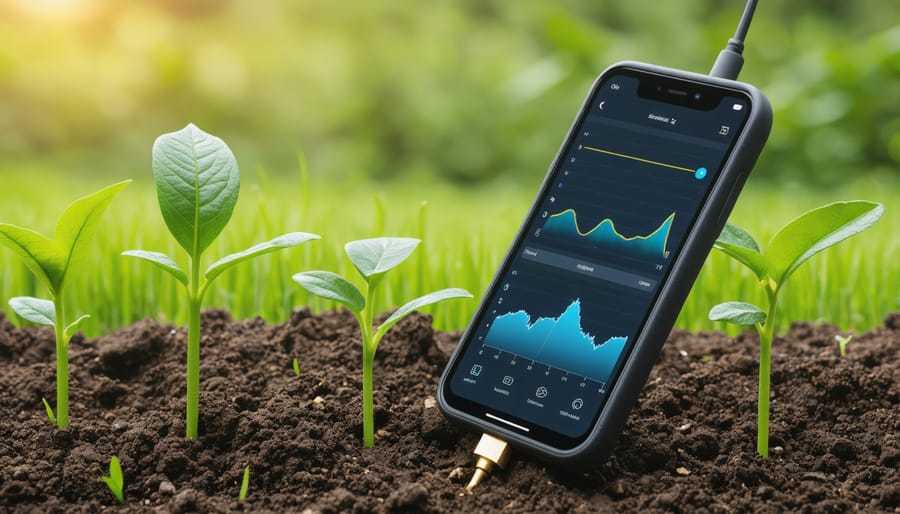
Soil Moisture Documentation
Accurate soil moisture documentation is crucial for successful farm management in Alberta’s diverse climate conditions. Farmers across the province have adopted various techniques to monitor and record soil moisture levels, combining traditional methods with modern technology.
The most reliable approach involves establishing consistent measurement points across your fields, typically marking these locations with GPS coordinates. Take readings at multiple depths – 15 cm, 30 cm, and 60 cm – to understand moisture distribution throughout the root zone. For best results, collect data early morning before significant evaporation occurs.
Modern soil moisture sensors provide continuous monitoring capabilities, automatically logging data to help track patterns over time. Many Alberta farmers use time-domain reflectometry (TDR) probes, which offer accurate readings while requiring minimal maintenance. Whether using manual or automated systems, maintain detailed records including:
– Date and time of readings
– Weather conditions
– Recent precipitation
– Crop stage and condition
– Irrigation events (if applicable)
Record keeping can be as simple as a notebook or as sophisticated as farm management software. Several Alberta producers have found success using mobile apps that sync with their moisture sensors, allowing for real-time monitoring and historical data analysis.
Remember to calibrate your instruments regularly and validate readings through physical soil sampling. This dual approach ensures accuracy and helps develop an intuitive understanding of your soil’s moisture characteristics.
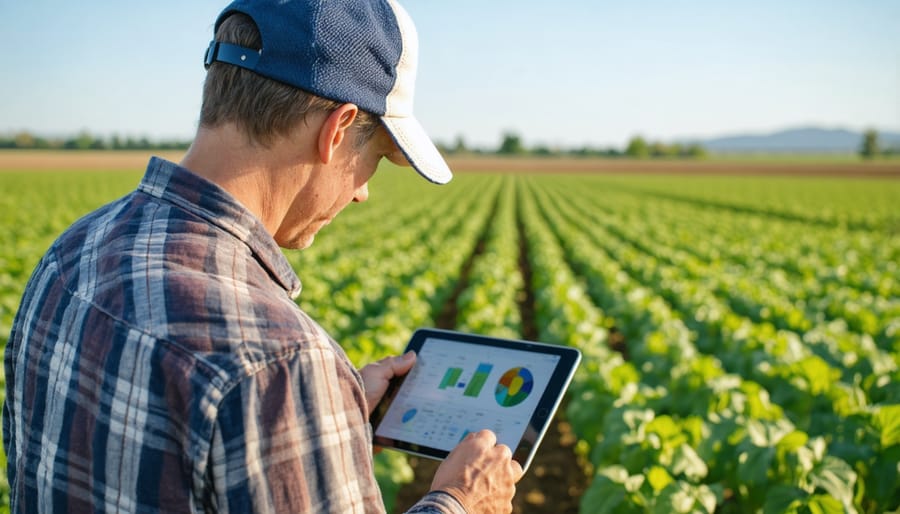
Success Stories from Alberta’s Fields
Small-Scale Implementation
Family farms across Alberta have discovered that maintaining a detailed conservation journal yields remarkable benefits for their operations. Take the Peterson family farm near Red Deer, for instance, which has documented a 30% reduction in water usage after two years of consistent journaling and implementation of learned insights.
The practice of conservation journaling has proven particularly valuable for small-scale operations, where every resource counts. Farmers report that keeping detailed records of soil moisture levels, erosion patterns, and water usage helps them make more informed decisions about irrigation timing and soil management practices.
Marie Lambert, who runs a 160-hectare farm near Lethbridge, shares that her conservation journal helped identify optimal times for cover crop planting, leading to improved soil health and reduced water runoff. “It’s like having a conversation with your land,” she explains. “The journal helps you listen more carefully.”
Local agricultural extension offices have noticed increased interest in conservation journaling among family farms. Many report that farmers who maintain detailed records are better positioned to access government support programs and demonstrate their commitment to sustainable practices. The simple act of recording observations has transformed how these farmers approach resource management on their land.
Large Operation Integration
Several large-scale farming operations across Alberta have successfully implemented comprehensive water and soil conservation practices, demonstrating the viability of these methods at a commercial level. The Henderson Family Farm in Red Deer County, managing over 2,000 hectares, has integrated advanced moisture monitoring systems with traditional Indigenous land management techniques, resulting in a 30% reduction in water usage while maintaining crop yields.
In Lethbridge County, the Morrison Agricultural Group has pioneered circular agricultural practices through their innovative soil conservation program. Their system combines cover cropping with precision irrigation, helping them reduce soil erosion by 40% and improve water retention across their 1,500-hectare operation.
The Prairie Rose Farming Cooperative, representing 15 large-scale producers in central Alberta, has implemented a shared watershed management approach. Their collaborative efforts have led to the restoration of natural wetlands and the establishment of buffer zones, benefiting not only their operations but also surrounding communities.
These success stories demonstrate how large-scale operations can effectively balance productivity with conservation, serving as practical models for other commercial farmers looking to enhance their soil and water management practices.
Getting Started with Conservation Journaling
Essential Tools and Resources
To effectively maintain a water and soil conservation journal, farmers need reliable tools and resources that support consistent monitoring and documentation. Essential equipment includes soil moisture meters, pH testing kits, and erosion monitoring stakes, all of which are readily available through agricultural supply stores across Alberta.
Digital tools have become increasingly important, with many farmers now using specialized apps and software to track conservation efforts. The Alberta Agriculture mobile app offers integrated soil monitoring systems that sync with weather data and provide real-time insights.
Local agricultural extension offices provide free resources, including soil sampling kits and water quality testing supplies. The Environmental Farm Plan (EFP) program offers complimentary workbooks and assessment tools to help track conservation progress.
Key documentation tools include:
– Weather-resistant field notebooks
– Digital cameras for photo documentation
– GPS devices for mapping problem areas
– Measuring tools for soil depth and erosion
– Water flow meters
Support resources available to Alberta farmers include:
– Agricultural fieldmen consultations
– Soil and water testing laboratories
– Conservation workshops and training
– Online databases for comparing historical data
– Regional farmer networks for knowledge sharing
Most of these tools and resources are available through cost-share programs or can be borrowed from local agricultural service boards, making them accessible to farms of all sizes.
Building Sustainable Habits
Maintaining a consistent journaling practice for water and soil conservation is crucial for long-term success on your farm. Start by selecting a specific time each day or week for recording observations – many successful Alberta farmers choose early morning hours before field work begins. Keep your journal in an easily accessible location, whether it’s a dedicated spot in your office or a mobile device you carry with you.
Create a simple template that includes key measurements like soil moisture levels, precipitation amounts, and erosion indicators. This makes the process more streamlined and ensures you’re capturing essential data consistently. Consider using a checklist approach for daily observations and a more detailed format for weekly or monthly assessments.
Make journaling a team effort by involving family members or farm workers. This not only helps distribute the workload but also provides multiple perspectives on soil and water conditions. Set up regular review sessions, perhaps monthly, to analyze trends and patterns in your records.
Connect with neighbouring farmers who also maintain conservation journals – many agricultural communities in Alberta have informal networks for sharing insights and experiences. Use your local agricultural extension office as a resource for journal-keeping best practices and templates.
Remember that consistency matters more than perfection. Even brief daily entries contribute to a valuable long-term record of your farm’s soil and water management journey.
The implementation of water and soil conservation practices represents a crucial investment in the future of Canadian agriculture. By actively monitoring and managing these vital resources, farmers across Alberta and beyond are securing not just their immediate yields, but the long-term sustainability of their operations. The evidence is clear: farms that implement comprehensive conservation strategies consistently report improved soil health, reduced water usage, and enhanced crop resilience.
As we’ve seen through numerous local success stories, these practices don’t just benefit individual farms – they strengthen entire agricultural communities. The sharing of knowledge and experiences through conservation journals and peer networks has created a powerful movement toward sustainable farming practices that respect our natural resources while maintaining profitable operations.
We encourage all agricultural professionals to take the next step in their conservation journey. Whether you’re starting with basic soil testing or advancing to sophisticated moisture monitoring systems, every action counts. Remember, you’re not alone in this endeavour – there’s a strong network of experts, resources, and fellow farmers ready to support your conservation efforts. By working together and implementing these proven strategies, we can ensure the vitality of Canadian agriculture for generations to come.


